Search Results
Fine Jewelry University Articles matching: “natural stone”
Showing only FJU Article results. Click here to show all results.
Fine Jewelry University (Show All FJU Articles)
-

Laser Jewelry Repair
…damaging the enamel or leaving visible signs of the restoration work. Our laser can fix jewelry without removing the stones or running the risk of solder flowing into the hinge and destroying its mobility. Antique filigree that is broken … that broke from doing repair work. Now they can be done. The laser gives us the ability to fix jewelry with glass stones that a torch would overheat and destroy. Inexpensive jewelry that has great sentimental value but could not be fixed …
-
Understanding the Diamond Buying Game
…report to say. So the first problem you have to contend with is what lab graded the diamond and how they grade. Next, understanding a diamond report is not just seeing the four C’s grade to compare diamonds. The same lab can grade two stones H VS2 1.00 carat and the value of the two diamonds can be hundreds, if not thousands of dollars different. It is a favorite trick of some diamond wholesalers to use GIA labs for very poorly cut diamonds. The general public knows GIA …
-
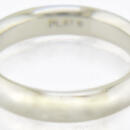
Platinum
… an increasingly popular choice for jewelry, either on its own or as the setting for diamonds and other precious gemstones. Platinum jewelry does not fade or tarnish and keeps its looks for a lifetime. Platinum’s purity makes it … wear. Its density and weight make it a durable jewelry metal. Platinum does not wear away and holds precious stones firmly and securely. Like all precious metals, platinum scratches. However, the scratch on a platinum piece is merely a …
-
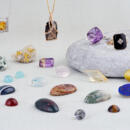
Gem in the Spotlight: Quartz
… and sometimes unattainably expensive? If you answered quartz to all these questions you would be right (but naturally you looked at the title and knew). Quartz is one of the most common minerals on earth. Many quartz varieties are cut into … is the “Berns Quartz,” named after the donors that donated it to the Smithsonian’s National Museum of Natural History. It is an 8,000 pound (yes you read that correctly) slab of natural clear quartz and is one of the largest clusters ever …
-
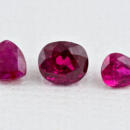
Gem in the Spotlight: Ruby
… rubellite tourmaline (the red variety of tourmaline) gets its name. Pliny the Elder mentioned rubies in his work Natural History, including notes on their durability, which means that their physical properties have been known well for over … the imagination of people for centuries. Whether you are a gem collector, a jewelry lover, or simply appreciate the natural beauty of the world, rubies are definitely a gemstone worth owning. If you are looking for a fantastic new piece of …
-

How Are Lab Grown Diamonds Made?
… Temperature Diamonds How does nature form diamond crystals? Nature does it very deep underground. Diamond growing naturally takes place about 100 miles below the earth’s surface. Why? Because that is where the conditions of extremely high …. Both HPHT and CVD diamonds tend to exhibit strong and unusual fluorescence characteristics when compared to natural diamonds. This fact, while not generally detrimental to the appearance of the diamonds, is quite useful when identifying …
-
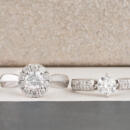
Anatomy of a Ring
… The gallery of a ring is a somewhat ambiguous term that refers to the underside of the ring beneath the center stone. There is often a design on the top part of the ring that is lifted up above the finger. In order to maintain the …next to each other. The constant friction with another ring can actually wear through the gallery leaving the center stone at risk of calling out. This is why we typically recommend that you have your rings soldered together if you plan to…
-
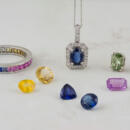
Gem in the Spotlight: Sapphire
… whose reflection gave the sky its color. Ancient priests and sorcerers honored sapphire above all gems, for this stone enabled them to interpret oracles and foretell the future. Symbolizing truth, sincerity and tradition, it has been said… Moses received the Ten Commandments they rested on tablets of sapphires. Marriage partners put great faith in the stone. If its luster dimmed, one knew his or her spouse had been unfaithful. Sapphire refused to shine when worn by the …
-
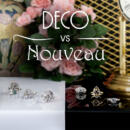
Art Deco vs. Art Nouveau Style Jewelry
… (1890 – 1910), Art Nouveau emerged as a rebellion against the academic art of the time. It sought to bring the natural world into artistic design, emphasizing flowing lines, asymmetrical forms, and motifs inspired by plants, flowers, and … adherence to symmetry and balance. Organic Forms: Art Nouveau jewelry features sinuous, curving lines that mimic natural shapes such as vines, flowers, and insects. Asymmetry is very common. Symbolism: Often imbued with symbolism and …